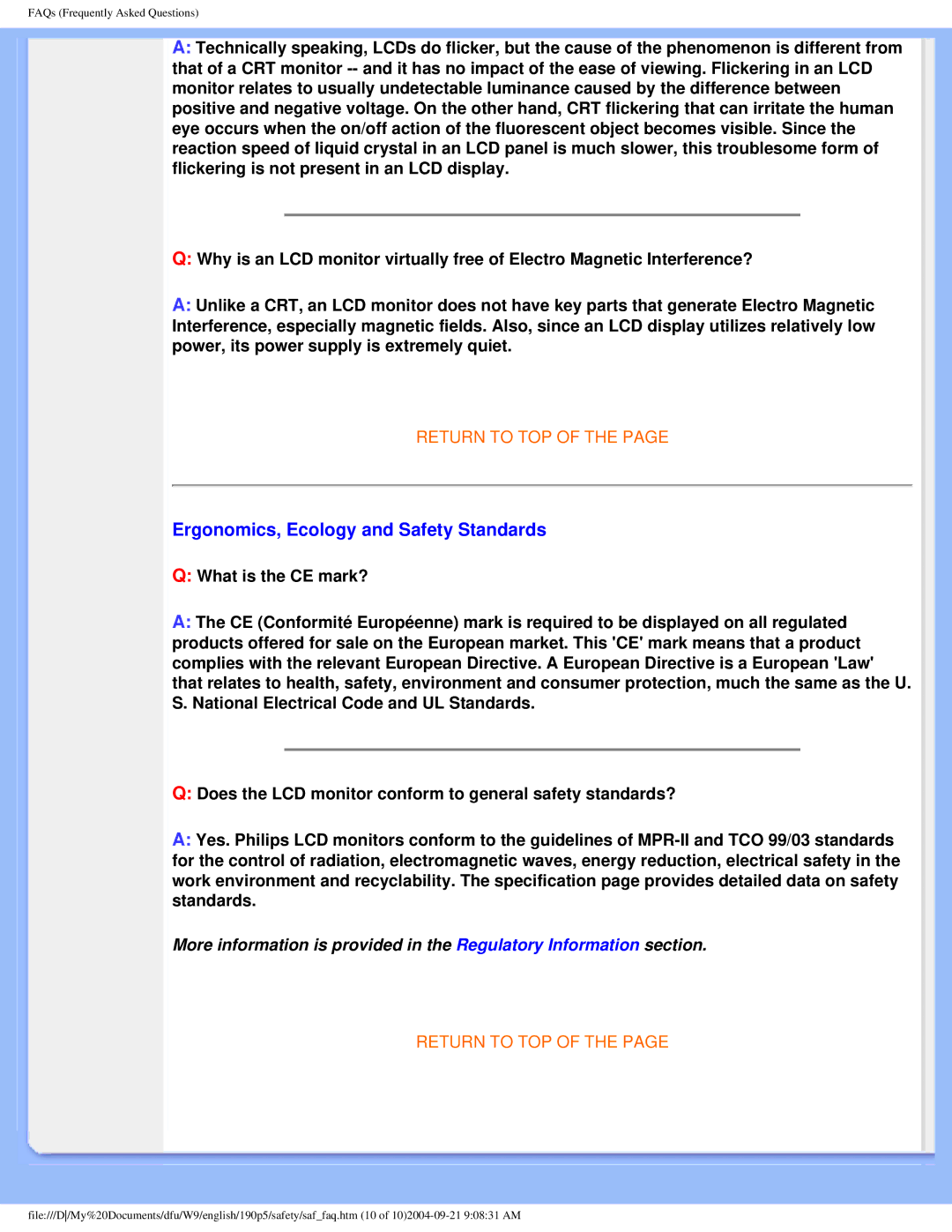
FAQs (Frequently Asked Questions)
A:Technically speaking, LCDs do flicker, but the cause of the phenomenon is different from that of a CRT monitor
Q:Why is an LCD monitor virtually free of Electro Magnetic Interference?
A:Unlike a CRT, an LCD monitor does not have key parts that generate Electro Magnetic Interference, especially magnetic fields. Also, since an LCD display utilizes relatively low power, its power supply is extremely quiet.
RETURN TO TOP OF THE PAGE
Ergonomics, Ecology and Safety Standards
Q:What is the CE mark?
A:The CE (Conformité Européenne) mark is required to be displayed on all regulated products offered for sale on the European market. This 'CE' mark means that a product complies with the relevant European Directive. A European Directive is a European 'Law' that relates to health, safety, environment and consumer protection, much the same as the U. S. National Electrical Code and UL Standards.
Q:Does the LCD monitor conform to general safety standards?
A:Yes. Philips LCD monitors conform to the guidelines of
More information is provided in the Regulatory Information section.
RETURN TO TOP OF THE PAGE
file:///D/My%20Documents/dfu/W9/english/190p5/safety/saf_faq.htm (10 of
